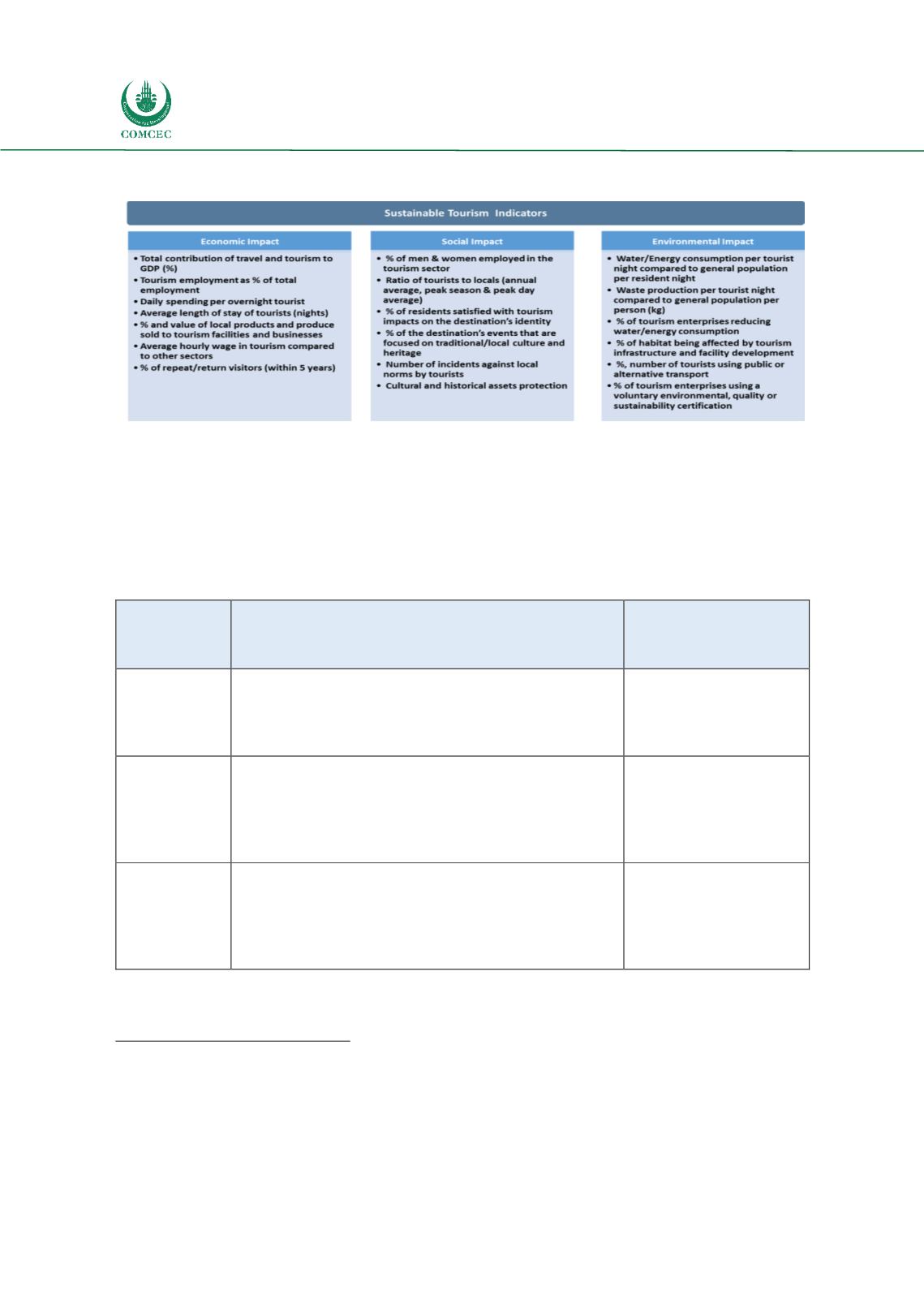

Sustainable Destination Management
Strategies in the OIC Member Countries
120
Figure 21: Select Sustainable Tourism Indicators
390
Source: DinarStandard Analysis
As the following table shows, leading best practices non-OIC countries have formal procedures in
place for continuous monitoring and reporting on destination sustainability. The indicators used
by these countries are internationally recognized and comprehensive; they cover economic,
socio-cultural, and environmental tourism impacts.
Table 17: Monitoring Destination Sustainability – Select Leading Non-OIC Countries
391
Monitoring Tools
Areas measured by
indicators
Denmark
Sustainability monitoring using the Global Sustainable
Tourism Council Indicators
Economic, social and
cultural,
and
environmental impacts
Germany
Sustainability monitoring using the European Tourism
Indicator System, the Global Sustainable Tourism
Council Indicators, and the German Sustainability
Code.
392
Economic, social and
cultural,
and
environmental impacts
New Zealand
Sustainability monitoring using the UNWTO’s
Indicators of Sustainable Development for Tourism
Destinations and the National Environmental
Standards.
393
Economic, social and
cultural,
and
environmental impacts
Source: DinarStandard Analysis
390
The UNWTO’s Indicators of Sustainable Development for Tourism Destinations, the Economist Intelligence Unit’s
Sustainable Tourism Index, and the EU’s European Tourism Indicator System.
391
All information provided is based on case study findings unless otherwise mentioned.
392
DTV. (2016).
Developing criteria for the sustainable structuring of tourism destinations in Germany
. Retrieved from
https://www.bte-tourismus.de/_ressources/documents/default/3-181-3-1468398114.pdf.393
Asia-Pacific Economic Cooperation. (2013).
Sustainable development of tourism destinations
. Asia-Pacific Economic
Cooperation. Sustainable Development of Tourism Destinations.
















